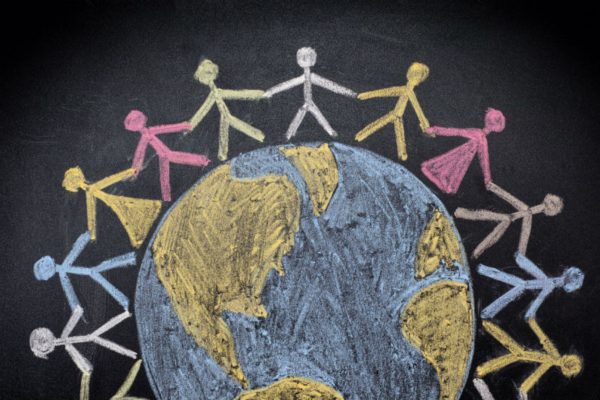That the 50th anniversary of Earth Day is occurring during the COVID-19 pandemic should encourage us to emerge from our isolation with a renewed focus on protecting the environment.
The worldwide quarantine has reduced our energy consumption, prevented significant water pollution and cleaned our skies. Skylines and vistas are crisp for the first time in decades as garaged cars and idled factories allow the air to clear. Cities are quieter without the piercing sounds of automobiles and traffic accidents.
This period of sheltering in place has reminded many of us what clean air and water look like. So how do we keep the environmental benefits without the economic destruction?
We do so by reinventing our urban landscape to include more greenspaces and changing our daily 8-to-5 commuter mentality.
The influenza pandemic of 1918-1919 teaches us that society can endure all sorts of challenges. It isn’t easy, but it often leads to better outcomes. After the combined effects of the 1918 influenza pandemic and World War I, for instance, there was a shortage of male labor. Consequently, women joined the workforce in unprecedented numbers, ultimately leading to suffrage a few years later.
Today, one of those positive outcomes should be a new commitment to clean air and water.
If teleworking gains popularity once society opens again, it could reduce commuter traffic, emissions and peak travel. And if those who commute are more flexible with their arrivals and departures for work, we can smooth the flow of traffic, reducing congestion and making our drives more pleasant. With fewer cars and less traffic congestion, we will need fewer lanes, parking spaces and garages, opening opportunities to keep our streets clearer for bicycles and alternative transportation modes or to replace them with greenspaces so residents can maintain safe social distance in urban centers. Switching to electric vehicles will let us keep air quiet and clear even as cars return to the streets.
We also need to think big.
Nearly a century ago, after a global pandemic and stock market crash preceded a long period of economic malaise, the United States turned to large-scale renewable projects and long-haul transmission lines as a pathway forward. With the COVID-19 pandemic and recent stock market collapse, we should do the same thing again. This time, instead of building large hydroelectric power plants in the Tennessee River Valley or along the Columbia River in Washington state, we should build large wind, solar and geothermal power plants everywhere we can. And just as we launched rural electrification during the Great Depression, we should build an updated national network of transmission lines to bring renewable power from its remote locations to our city centers.
The evidence that people exposed to air pollution have a much higher risk of mortality from COVID-19 should be overwhelming incentive to clean our skies once and for all.
We need to support initiatives that improve our energy and transportation infrastructure. Large consumers with coal-heavy fleets such as the U.S., China and India need to accelerate the retirement of dirty, uneconomic coal plants and replace them with cleaner options such as wind, solar and natural gas.
While traffic is low, cities worldwide should paint and stripe streets for dedicated bus corridors and protected bike lanes, create pedestrian-only throughways, and expand the network of electric vehicle charging stations. And an important part of the global infrastructure is our human capital in the R&D world.
The world’s research ecosystem of industrial facilities, national labs and universities in many countries should deploy high levels of internal and governmental support to accelerate the pace of our innovation.
This Earth Day, let’s remember that although the pandemic is scary and unsettling, it also presents an opportunity for us to come together to solve difficult problems in a lasting way.
Michael E. Webber is the Josey Centennial Professor in Energy Resources at The University of Texas at Austin. He also serves as the chief science and technology officer at ENGIE, a global energy and infrastructure services company headquartered in Paris. A six-part documentary series based on his book “Power Trip: The Story of Energy” is scheduled for release on PBS and Amazon Prime starting April 20.
A version of this op-ed appeared in the Austin American Statesman, Corpus Christi Caller Times, Abilene Reporter News and the San Antonio Express News.




